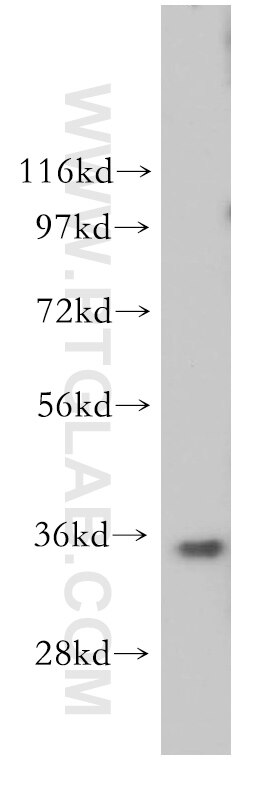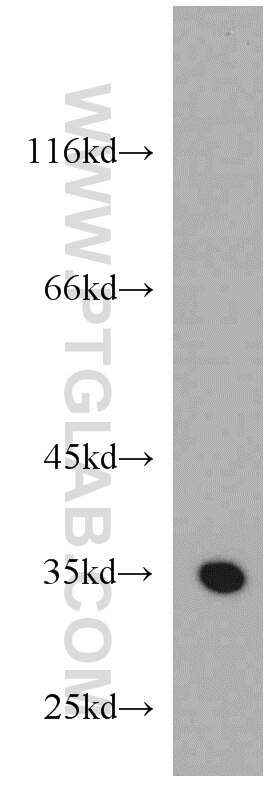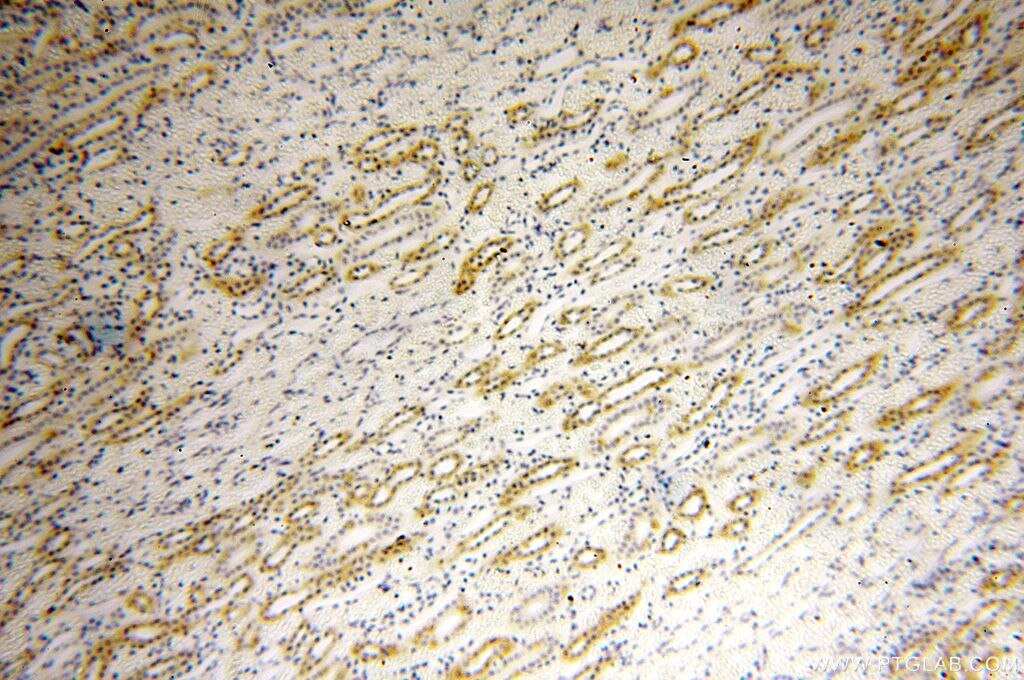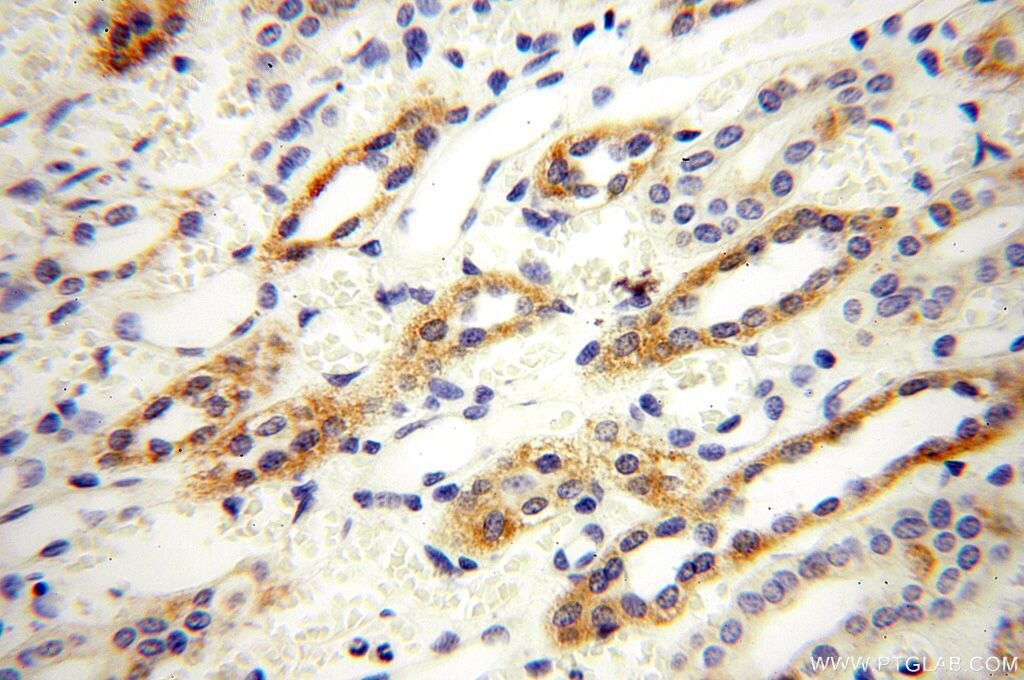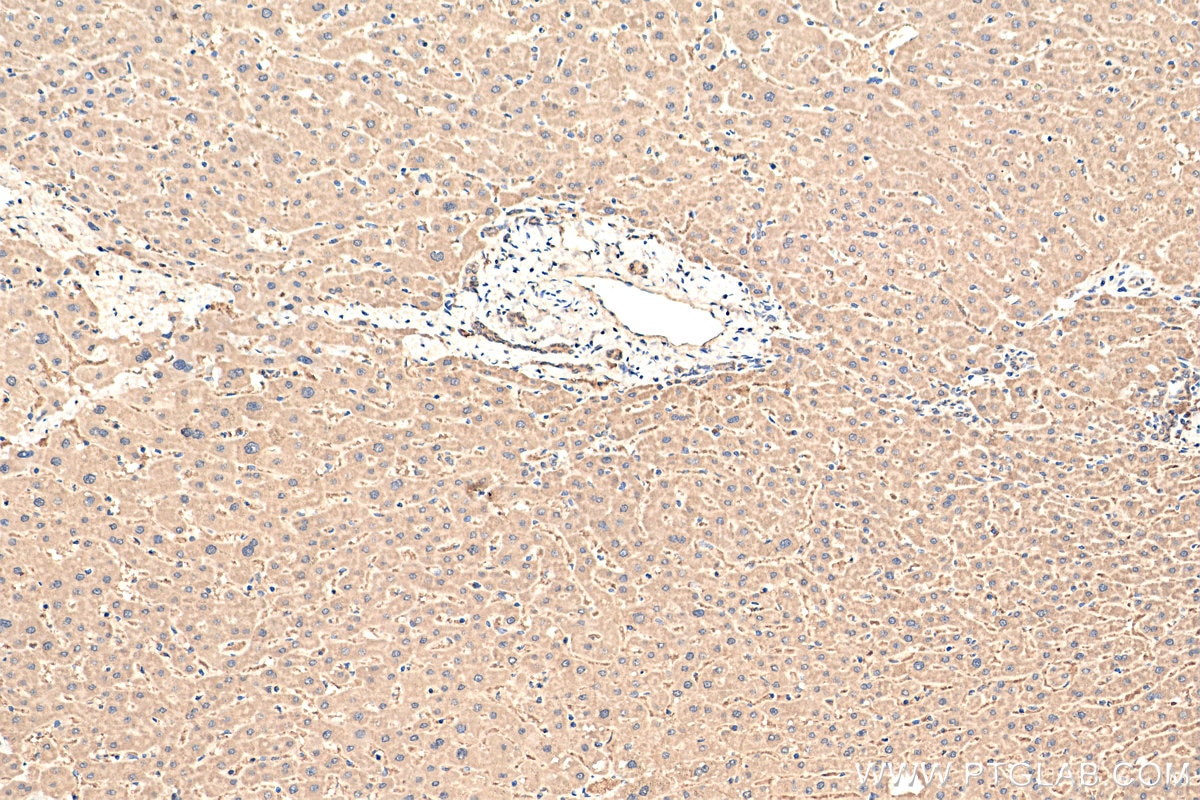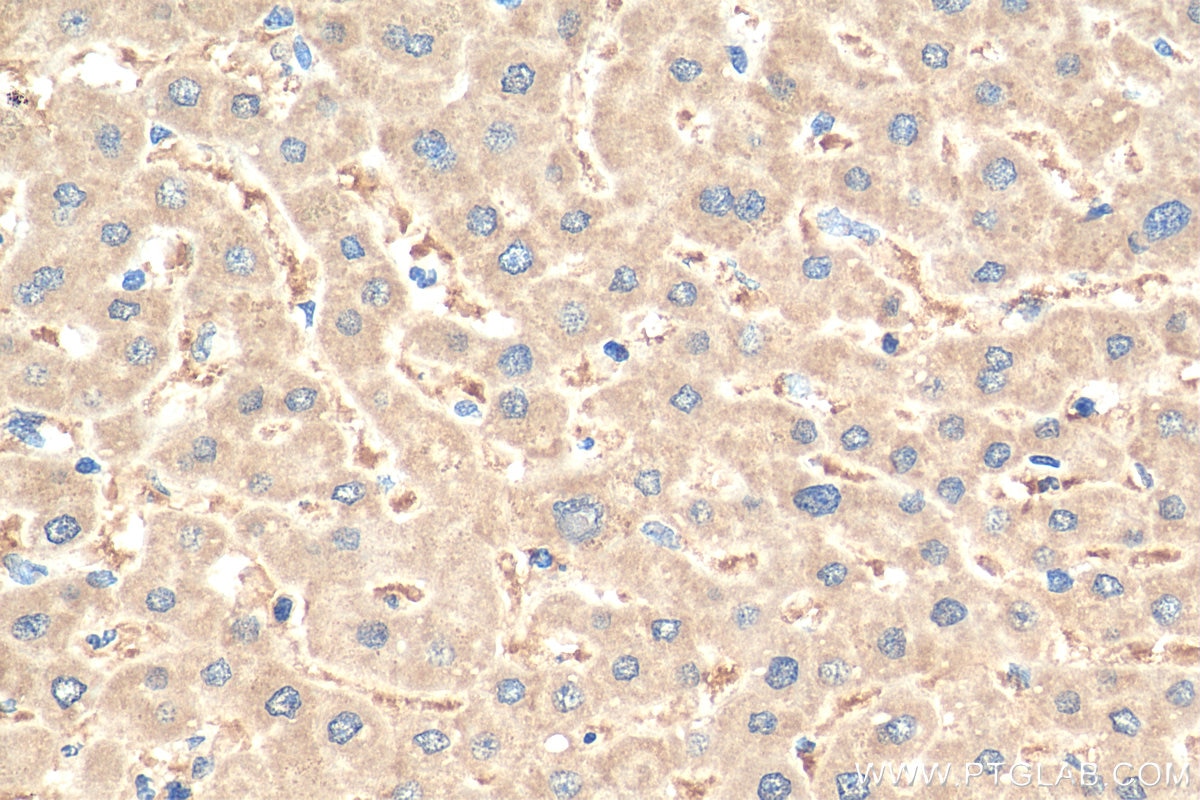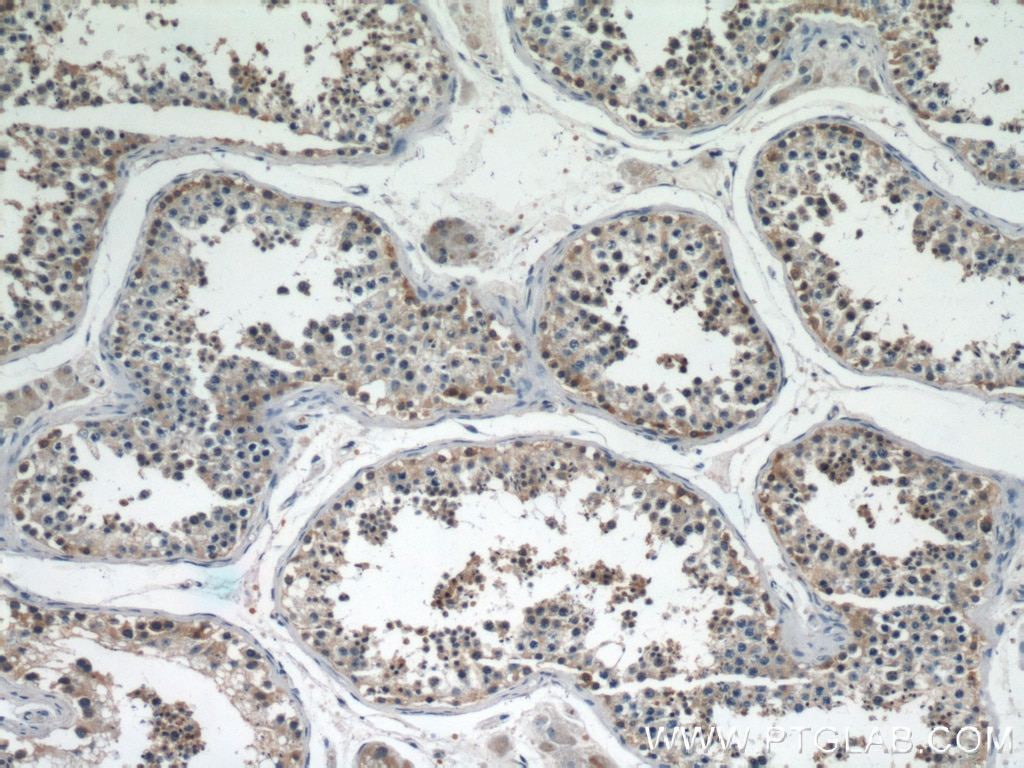- Phare
- Validé par KD/KO
Anticorps Polyclonal de lapin anti-GGPS1
GGPS1 Polyclonal Antibody for WB, IP, IHC, ELISA
Hôte / Isotype
Lapin / IgG
Réactivité testée
Humain, souris
Applications
WB, IHC, IF, IP, ELISA
Conjugaison
Non conjugué
N° de cat : 14944-1-AP
Synonymes
Galerie de données de validation
Applications testées
| Résultats positifs en WB | tissu cérébral de souris, tissu cardiaque humain, tissu placentaire humain, tissu testiculaire humain, tissu vésical de souris |
| Résultats positifs en IP | tissu cérébral de souris |
| Résultats positifs en IHC | tissu rénal humain, tissu hépatique humain, tissu testiculaire humain il est suggéré de démasquer l'antigène avec un tampon de TE buffer pH 9.0; (*) À défaut, 'le démasquage de l'antigène peut être 'effectué avec un tampon citrate pH 6,0. |
Dilution recommandée
| Application | Dilution |
|---|---|
| Western Blot (WB) | WB : 1:500-1:1000 |
| Immunoprécipitation (IP) | IP : 0.5-4.0 ug for 1.0-3.0 mg of total protein lysate |
| Immunohistochimie (IHC) | IHC : 1:20-1:200 |
| It is recommended that this reagent should be titrated in each testing system to obtain optimal results. | |
| Sample-dependent, check data in validation data gallery | |
Applications publiées
| KD/KO | See 4 publications below |
| WB | See 8 publications below |
| IHC | See 8 publications below |
| IF | See 3 publications below |
| FC | See 1 publications below |
Informations sur le produit
14944-1-AP cible GGPS1 dans les applications de WB, IHC, IF, IP, ELISA et montre une réactivité avec des échantillons Humain, souris
| Réactivité | Humain, souris |
| Réactivité citée | Humain, souris |
| Hôte / Isotype | Lapin / IgG |
| Clonalité | Polyclonal |
| Type | Anticorps |
| Immunogène | GGPS1 Protéine recombinante Ag6745 |
| Nom complet | geranylgeranyl diphosphate synthase 1 |
| Masse moléculaire calculée | 35 kDa |
| Poids moléculaire observé | 35 kDa |
| Numéro d’acquisition GenBank | BC067768 |
| Symbole du gène | GGPS1 |
| Identification du gène (NCBI) | 9453 |
| Conjugaison | Non conjugué |
| Forme | Liquide |
| Méthode de purification | Purification par affinité contre l'antigène |
| Tampon de stockage | PBS with 0.02% sodium azide and 50% glycerol |
| Conditions de stockage | Stocker à -20°C. Stable pendant un an après l'expédition. L'aliquotage n'est pas nécessaire pour le stockage à -20oC Les 20ul contiennent 0,1% de BSA. |
Informations générales
GGPS1(Geranylgeranyl pyrophosphate synthase) belongs to the FPP/GGPP synthase family and catalyzes the synthesis of GGPP, an important molecule responsible for the C20-prenylation of protein and for the regulation of a nuclear hormone receptor. GGPP synthase puri¢ed from bovine brain is reported to be a homo-oligomer (150-195 kDa) with a molecular mass of 37.5 kDa for the monomer. This is consistent with the calculated molecular mass (35 kDa) of mouse and human GGPP synthases (PMID:10101267).
Protocole
| Product Specific Protocols | |
|---|---|
| WB protocol for GGPS1 antibody 14944-1-AP | Download protocol |
| IHC protocol for GGPS1 antibody 14944-1-AP | Download protocol |
| IP protocol for GGPS1 antibody 14944-1-AP | Download protocol |
| Standard Protocols | |
|---|---|
| Click here to view our Standard Protocols |
Publications
| Species | Application | Title |
|---|---|---|
Dev Cell Quantitative proteomic profiling identifies global protein network dynamics in murine embryonic heart development | ||
FEBS J Conditional Loss of Geranylgeranyl Diphosphate Synthase Alleviates Acute Obstructive Cholestatic Liver Injury by Regulating Hepatic Bile Acid Metabolism. | ||
Am J Pathol Geranylgeranyl Diphosphate Synthase Modulates Fetal Lung Branching Morphogenesis Possibly through Controlling K-Ras Prenylation. | ||
J Cell Mol Med Overexpression of geranylgeranyl diphosphate synthase contributes to tumour metastasis and correlates with poor prognosis of lung adenocarcinoma.
| ||
Cells Cysteine-Rich LIM-Only Protein 4 (CRP4) Promotes Atherogenesis in the ApoE-/- Mouse Model. | ||
J Hepatocell Carcinoma miR-612 Enhances RSL3-Induced Ferroptosis of Hepatocellular Carcinoma Cells via Mevalonate Pathway |


